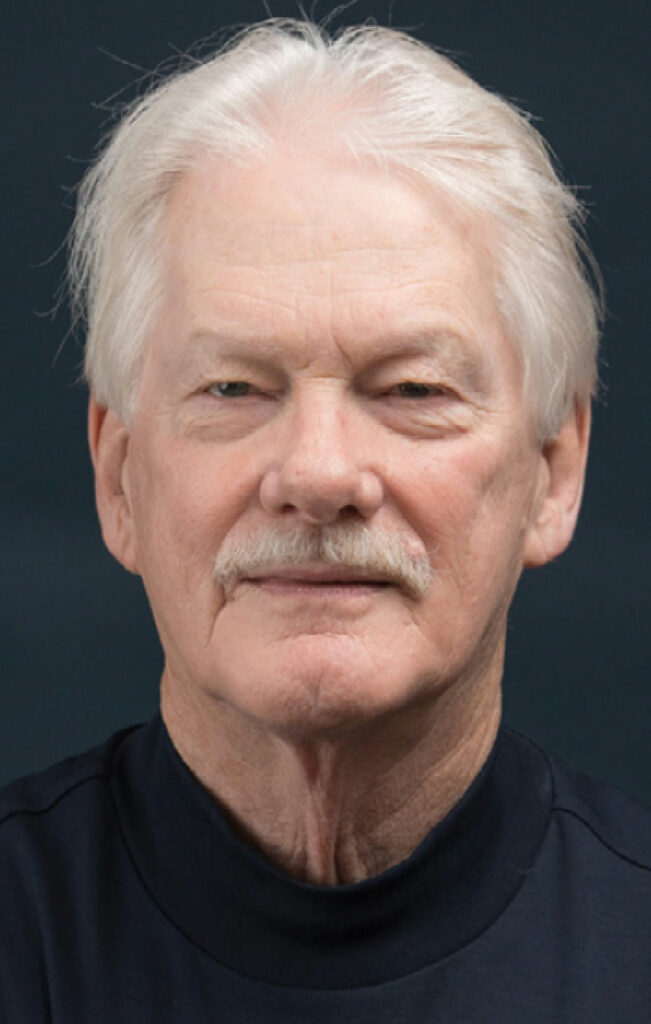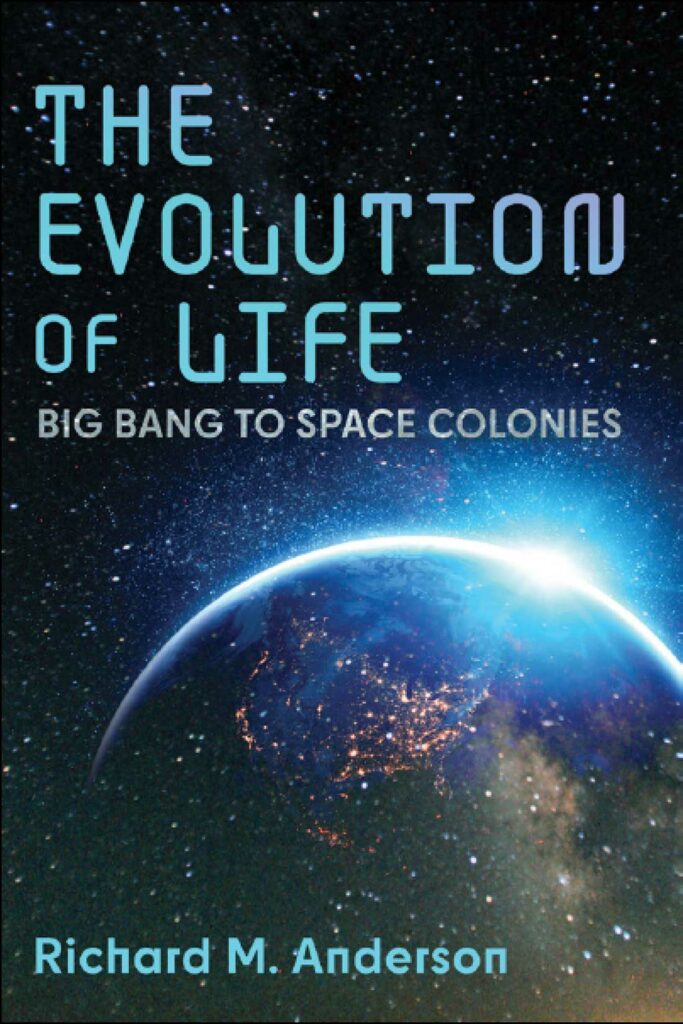“The Evolution of Life: Big Bang to Space Colonies,” a new book by longtime Morgan Hill resident Richard Anderson, explores the origins—and future—of life in the universe through the lens of multiple scientific disciplines.
Anderson, a San Jose State University alumnus with a Master’s in microbiology, wrote the non-fiction science book for advanced high school and university freshmen students who are considering majoring in science. However, the work reflects his nearly lifelong curiosity of the sciences, he wrote in a recent interview with this newspaper.

“The last section of the book projects society into a possible future in space and explores some obstacles to that eventuality,” reads Anderson’s description of the book. “Overall, the work shows a connective thread from the very beginning of time extending through to the future. The primary theme in the section about human biological and social evolution is ecology. We look at the ways humanity is destroying our environment and some actions that can lead to correction.”
Anderson has lived in Morgan Hill for more than 40 years. He is retired from his career as a Clinical Laboratory Bioanalyst and Director.
A special edition of “The Evolution of Life: Big Bang to Space Colonies,” published by Precocity Press, is available for sale at BookSmart in Morgan Hill, Anderson said. The book is also available on Amazon.com.
Anderson agreed to answer a few questions by email from the Times about his new book and why he wrote it. His answers follow.
What is your new book, “The Evolution of Life,” about?
Of course, it’s about the evolution of life. However, the subtitle “Big Bang to Space Colonies” implies that this story of life begins at the instant of the “Big Bang.” The physics then-established determined the nature of all that followed. That includes life. Working backwards, life exists because of the nature of chemistry which exists because of the nature of the elements which are constructed of subatomic particles, the nature of which was determined at the instant of the “Big Bang.”
The details of this process are unbelievably complex, but the idea of a thread of progressive connection to the present is not.
What audience or market is the book written for?
This book was primarily written for AP High School students and beginning university students who are considering a science major but are unsure of a specific area they might want to pursue.
In this book I touch on many different sciences: physics, chemistry, biochemistry, molecular biology, microbiology, evolution from beginning to humans, brain structure and function, sociology, psychology, ecology, planetary science and probably a few other areas. I try to connect the convergence of these disciplines to show the interconnectedness and unification of nature.
I have had the desire to write this book for most of my professional life. I have not had the ability until now. The Covid lockdown presented the seclusion to do it. Even so it took approximately two years to complete.
What motivated you to write a book about the evolution of life?
I have always had nagging questions about different aspects of science, about my continued reading that I never seemed to have the time to resolve. They stayed with me, however. But even in retirement, there are many distractions and “bucket list” items to attend to. International travel was a distraction, as were family and grandkids.
The Covid lockdown removed many of those distractions. I had the time and seclusion. I could not, not write this book.

When I was in the 9th grade, I borrowed a book from my science teacher titled something like, “The Chemistry of Life.” I actually read it but with very little comprehension; however, I did learn that it was possible to know things that were not obvious from everyday experience. My love of and study of science was not a straight-line journey, but I did come back to it in college and university.
Any unique insights about modern life in Morgan Hill and how it relates to the origin or evolution of the universe?
I am awestruck by nature, of its beauty and complexity. The connectiveness of all living things. Even tree roots and fungus communicate with each other underground and support each other with nutrients. Conifer trees in forests warn each other of beetle attacks by releasing chemicals when they are infested, warning nearby trees to activate defenses. The warned trees produce more sap to expel infecting beetles.
Morgan Hill and the whole South County is a treasure because much of the land area remains rural. Our nearby natural parks and lands are most precious.
What else do you do for fun or livelihood or in your spare time?
Family times around the pool with our children and grandchildren are a great blessing. My wife, Carol, and I have been retired for 12 years. We have been fortunate in the first 10 years to have traveled much of both northern and southern Europe, the South Pacific and a little of China. We are looking forward to a return to travel early next year.
In the meantime, I am writing another book. This time it will be fiction. It jumps off where I leave “The Evolution of Life…” I begin with human societies in space and explore how they could develop. Wish me luck!








